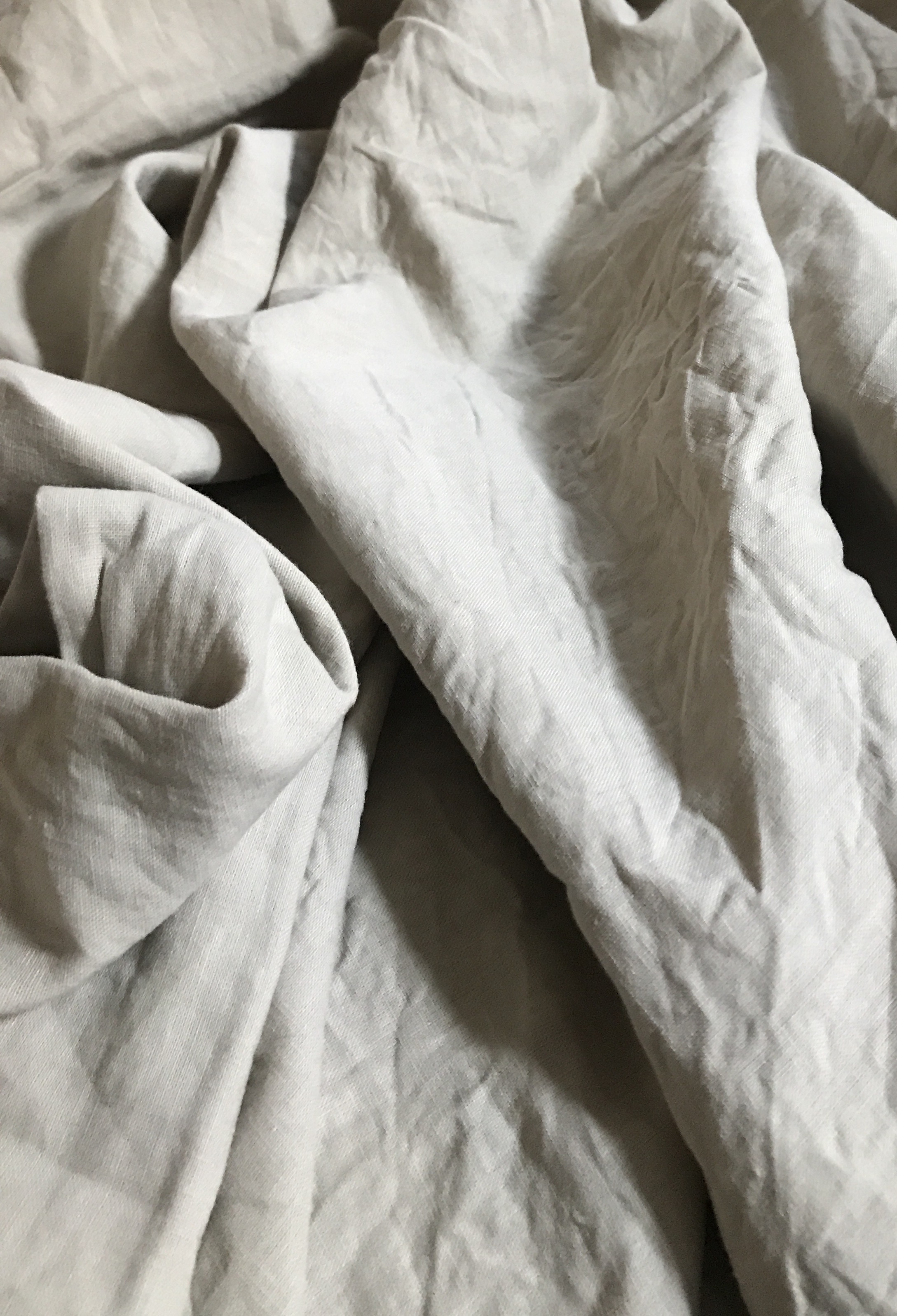Why choose Linen?
Linen is a luxurious natural fabric, revered throughout history for its ability to keep you cool in summer and warm in winter.
It's a great choice for your bedding as it helps you create the perfect sleeping conditions for you to get a great night's sleep. Linen is made from natural fibres and is said to be one of the world's oldest and most prized fabrics. Generations before us have known and appreciated the qualities of linen. Such was its value that it was once used as a currency in ancient Egypt!
The linen fibre is derived from the middle of the flax plant. It's widely known that the climactic conditions of France and Belgium in Western Europe are ideal for the flax plant and that is but one reason why the world's best linen is produced there. The cooler temperatures and seasonal-variation of western Europe together with fabled artisanal know-how produce this eternally versatile fabric. The spinning of the yarn is generally done close to where it is harvested, but it's at the point of weaving in the mills where the linen really comes to life. The best weaving mills are undeniably in Italy where local knowledge, passed-down from generation to generation is skilfully used to create the best linen fabrics in the world.
Linen possesses many unique characteristics, which help to make it perfect for bedding and sleeping. It has unique filtering, moisture-absorbance and evaporative qualities, making it bacteria resistant and the perfect non-allergenic bed linen.
This is why linen bedding is recommended for people living in hot, humid houses or who have skin issues or for those who suffer from overheating. Linen is a hollow fibre; much like wool it is a breathable fabric, keeping you warm in winter and cool in summer. In addition to these benefits it is also considered to be an environmentally friendly fabric as it is a renewable resource, needs little irrigation, is also fully biodegradable.
Part of the charm of linen, as a fabric, is its irregularity. You'll often notice small knots in linen and these are known as "slubs" which occur randomly along the fabric. In the past, slubs were traditionally considered to be defects, and were associated with inferior linen. However, these days, slubs are considered as part of the aesthetic appeal of linen. Slubs have no bearing on the integrity of the fabric therefore it's somewhat silly to view the slubs in linen as a defect: they're not.
Linen is a very durable, strong fabric and one of the few fabrics that is stronger wet than dry. The fibres do not stretch, and are resistant to damage from abrasion. However, because linen fibres have a very low elasticity, the fabric eventually breaks if folded and ironed at the same place repeatedly over time. Linen does have poor elasticity and doesn't spring back readily, explaining why it wrinkles so easily. Nevertheless, the tendency to wrinkle is considered part of its charm, and should be celebrated with natural air-drying in the sun.
The more linen is used and washed over time, the softer it'll become. It is extremely durable and can last decades when cared for correctly.
Things like mildew, excess perspiration, and bleach can damage the fabric, however it is resistant to moths and carpet beetles. This ancient fabric is relatively easy to take care of, since it resists most dirt and stains, has no lint or pilling tendency and can be dry-cleaned, machine-washed or steamed.
Cotton and linen are two similar products, yet they are quite different in their look and feel. Cotton can be quite soft and silky straight out the packaging, whereas linen will reward regular use with a developing softness. When washed and cared for correctly cotton sheets will last around three to five years before showing signs of wear. Linen fabric, however, will really only begin to shine after three years of usage. It becomes softer with every wash and doesn't break down as fast which is due to the higher moisture absorbency rate of the linen fibres. It is also naturally hypoallergenic which means perspiration is less likely to break down the linen fibres, as it would in cotton.
A fabric's thread-count isn't always the right way to compare two different types of fabrics. People often mistakenly compare the thread counts of linen to cotton which is misleading. Egyptian Cotton is a very fine fibre. This is because the cotton yarn is very fine and as such, cotton can be woven into a higher thread count than linen. Linen, on the other hand, is a much thicker fibre which makes it a more robust and durable fabric. So it makes sense that linen has a lower thread count than cotton. An average linen fabric used for sheeting has a thread count of between 80 and 150, of course such a count would be considered low for a cotton sheet, however overall the linen is considered a superior and longer lasting product.
While the initial investment of linen bedding may be slightly more than cotton, its longevity, environmental friendliness, and hypo-allergenic benefits really makes linen the perfect bedding for the perfect nights sleep.




